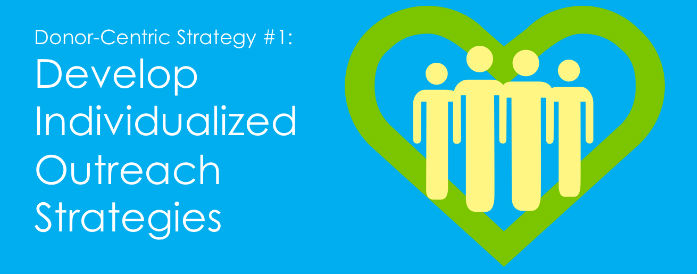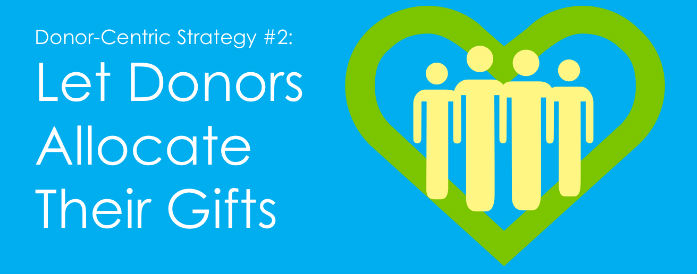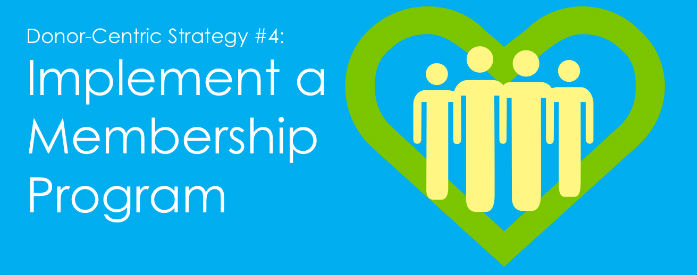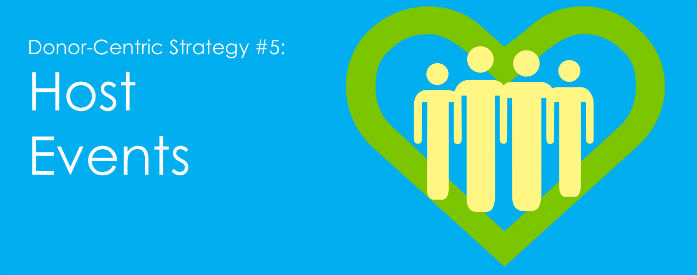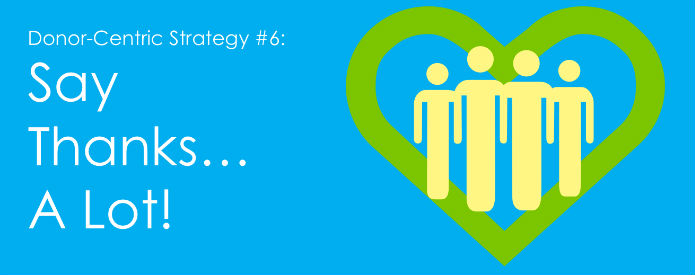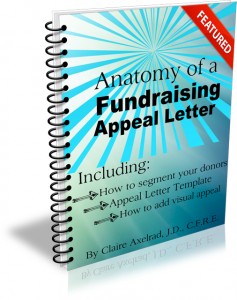Annual giving is the cornerstone to any nonprofit fundraising effort.
And while some organizations think of annual giving as a way to raise money for their operational expenses and other projects and causes, I’m about to let you in on a secret:
It’s not.
To clarify, the annual campaign is about raising money, but more importantly, it’s about establishing relationships with your donors.
Fundraising must be sustained over the long-term to be worth your effort. The annual campaign is the perfect opportunity for organizations to start getting to know their donors better and build more meaningful and valuable relationships with them. These relationships will naturally result in better fundraising, both for this campaign and future efforts.
That means, when planning for your annual campaign, your organization should be thinking strategically about stewardship and how you can best cultivate donor relationships.
To get you started, here I’ll discuss 6 of my favorite donor-centric annual giving strategies that will help you make the most out of your efforts. They include:
- Developing individualized outreach strategies.
- Letting donors allocate their gifts.
- Making your communications donor-centric.
- Implementing a membership program.
- Hosting events.
- Saying thanks…a lot!
By the time we’re done, you’ll have a few handy tips to help you build a more loyal base, and consequently, raise more from your annual fund.
Let’s start stewarding!
-
Develop individualized outreach strategies.
Annual giving campaigns typically have three main components:
- Outreach or communications,
- Events, and
- Direct asks.
While I’ll touch on all of these components throughout this piece, we should start with the one that’s most pertinent to stewardship: outreach.
Outreach refers to any time you contact your donors outside of making a direct ask. It’s the method by which you:
- Keep them updated about your campaign,
- Share organizational news,
- Offer them opportunities to get involved with your organization beyond donating, and
- … more!
To make the most out of your outreach, it’s best to develop individualized outreach strategies.
Individualized outreach strategies are just what they sound like: catering your annual fund outreach to each individual donor as much as possible.
Why is this important?
Even though they’re united by your cause, all of the donors in your base have unique personalities and backgrounds. They all have different communication preferences, and they all relate to your organization in various ways.
Imagine you were a donor who had been giving loyally to the same nonprofit for years. You would probably be offended (or at the very least, confused) if you received the same piece of outreach as someone who had just submitted their first donation.
To start developing individualized outreach strategies, consult your nonprofit donor database (for more on those, check out Neon’s Buyer’s Guide) and see what insights you can gain into your current supporters’:
- Affinities
- Interactions with your organization
- Communication preferences
You’ll want to keep all of these in mind as you’re determining both which content to include in your annual fund outreach and the medium through which you’ll send this content.
Next, segment out your list into the most pertinent categories (for example, major donors, recurring givers, one-time donors, etc.). This will make it much easier to target each group with different communications strategies.
Taking an individualized approach shows donors that your organization takes a personal interest in them and their history with your organization. It also ensures that your communication is always as relevant and compelling as possible.
When your outreach is both thoughtful and meaningful, your organization is sure to see more annual fund donations!
The bottom line: By individualizing your outreach, donors will feel more valued by and invested in your organization, resulting in increased annual fund donations.
-
Let donors allocate their gifts.
Traditionally, annual funds are defined as the money organizations raise to cover their operational expenses.
And while this definition isn’t wrong, per se, it can be problematic to conceptualize the annual fund so broadly.
The primary issue is that it makes it harder for nonprofits to build trust with their donors. When marketing annual giving simply as a way to fund the overall organization, it’s harder to equate gifts with concrete results, which can make donors hesitant to give.
One way to alleviate this problem is by breaking the annual campaign down into smaller, more clearly defined packages and allowing donors to allocate their gifts.
Of course, your organization will need to use the annual campaign as an opportunity to raise operational expenses, so these packages can still apply to internal programs and necessities.
Once you’ve figured out what your goals are, think about how you can section off your needs into smaller, more digestible packages. These packages should be specific and should directly equate gifts with tangible results.
All that matters is that your organization identifies the core areas or projects you hope to fund with your annual campaign.
Now when making your direct asks, you can provide donors with multiple options and let them choose where to allocate their funds.
When they can give to the causes they care about most and more clearly see how their gifts will further those causes, your donors will be much more confident when it comes to giving to your annual fund.
The bottom line: Breaking the annual fund down into smaller packages will help your organization establish more trust and will allow your donors to choose how they support you, both of which lead to more donations.
-
Make your communications donor-centric.
Just as important as taking a personal approach to your donors is centering your outreach around them.
You might be wondering: If I’m sending my outreach to my donors, isn’t it centered around them?
Not necessarily. Far too many organizations still make the mistake of centering their outreach around the organization’s internal efforts.
Instead of focusing on their donors’ contributions and how they’ve helped further the organization, nonprofits instead often focus on their own achievements and concerns.
But, when you really think about it, this is a misguided approach. Your donors have played a huge role in getting your organization to where it is today, and they’re the ones who will keep pushing your organization forward.
Your outreach should be all about them!
One easy way to ensure your outreach is donor-centric is to count the number of first-person (“I” or “we”) and second-person pronouns (“you”). If the second-person pronouns outnumber the first-person pronouns, it’s a good sign that your outreach is donor-centric.
Additionally, you should always keep this thought in mind as you’re posting about your annual fund on your website or crafting your outreach:
Your donors don’t want to learn about your organization. They want to know how others like them got involved and made a difference.
When they can better envision their involvement in your organization, your donors will be far more likely to give to your annual fund!
The bottom line: To raise more from your annual fund, your outreach should always be framed around your donors and their role in your organization.
-
Implement a membership program.
To grow your annual fund even more, your nonprofit should consider implementing a membership program.
For a quick refresher, membership programs grant donors exclusive perks, rights, or privileges in exchange for charitable contributions. These contributions are usually given in the form of fees or dues.
Because donors are rewarded for their gifts, membership programs are an excellent way to incentivize giving.
They can also help nonprofits establish a more loyal and invested donor base. Since membership relies on a mutual exchange of benefits, you’ll have a set framework in place for engaging supporters.
To get started with a membership program, your organization first needs to define the program. You should think about both how you wish to engage your donors and what benefits you can provide in return.
The benefits will be dependent on your organization’s needs and resources, but they can really run the gamut. For example, your organization could provide its members:
- A welcome package of merchandise branded to your organization.
- Exclusive content and resources or first access to organizational news.
- Invitations to members-only events, trade shows, or conferences.
- Perks at your other fundraising events (VIP seating, free refreshments, etc.).
- Access to special programs or services.
- Internal influence at your organization.
No matter the parameters of your program, you should have a clearly defined process in place for administering benefits and managing subscriptions and renewals.
And, of course, make sure to market your program to your base in your annual fund outreach! When your donors see all of the amazing benefits membership can offer them, they won’t hesitate to give to your annual fund.
The bottom line: Membership programs help nonprofits more thoroughly engage their donors and see more donations to their annual funds.
-
Host events.
One of the other main components of annual campaigns are fundraising events.
Hosting events both provides your organization with another fundraising outlet and gives you the all-too-rare chance to interact with their supporters in person.
In other words, running events really is a win-win!
Depending on what works best for your organization, you can either choose to host one annual event each year to build a tradition (for example, a silent auction) or host a succession of smaller fundraising events to engage your donors in different ways.
Both strategies have their advantages. All that really matters is that you’re hosting events in the first place.
Events can grow your annual fund because they help donors feel more invested in your nonprofit.
Think about it: your organization and cause will be much more compelling and immediate when donors have met your staff face-to-face and have a fun experience to associate with your organization. They’ll feel closer to you, which means they’re more likely to give and keep giving.
Plus, many donors feel more comfortable donating within the context of events. When you provide multiple ways to give to your organization, you’re sure to hit more donors’ preferences and, thus, see more donations.
Not to mention, events provide your organization with the ideal opportunity to get to know your donors better. Talking to them in person can give you some valuable insights that can help you better target them during this campaign and those in the future.
Make sure to keep your eyes and ears open, jot down some notes, and record any valuable information you receive in your CRM!
The bottom line: There are many advantages to hosting fundraising events. Incorporate them into your annual giving campaign to see more funds now and down the line!
-
Say thanks…a lot!
What’s one of the best ways to see improved fundraising results for your annual fund (and for any campaign for that matter)?
Say thanks, and say it a lot.
While it might seem obvious, expressing your gratitude can do wonders for your donor retention.
After all, people are much more likely to keep supporting those who make them feel valued and appreciated.
Furthermore, your donors are going above and beyond to support you. Although they’re doing it out of the goodness of their hearts and might not expect any recognition, they do deserve to be recognized for all they’ve done!
So when should you say thanks? You don’t need a special occasion to thank your donors, but make sure to express your sincerest gratitude every time a donor:
- Makes a donation.
- Attends one of your events.
- Joins your membership program.
- Takes an advocacy action.
- Otherwise interacts with your organization.
Saying thanks might not have a big impact on your current campaign, but it will definitely position you for success down the line.
The bottom line: An appreciated base is one that will stick with you and keep giving for longer, which means better fundraising results both now and in the future.
Bonus: Check out Qgiv’s tips for better donor thank you letters.
When done right, your annual campaign should primarily be about stewarding your donors.
If you use these tips, you should be able to start establishing the deeper, more personal relationships that will help you raise the most for your annual fund and your future fundraising campaigns, too.
Click here for even more annual fund strategies!
 This article was generously contributed by Jeff Gordy, Co-Founder and CEO of Z2 Systems, Inc., the makers of NeonCRM for nonprofits. Jeff has been working with his team for the last 12 years on building the optimal fundraising, CRM database, and marketing solution for nonprofits. Before starting the company, Jeff worked for the Kidney Cancer Association and knew that nonprofits needed better software solutions to help with their many challenges.
This article was generously contributed by Jeff Gordy, Co-Founder and CEO of Z2 Systems, Inc., the makers of NeonCRM for nonprofits. Jeff has been working with his team for the last 12 years on building the optimal fundraising, CRM database, and marketing solution for nonprofits. Before starting the company, Jeff worked for the Kidney Cancer Association and knew that nonprofits needed better software solutions to help with their many challenges.
Don’t Forget to Make an Offer Your Donor Can’t Refuse!
Once you’ve got your potential donor all warmed up, make sure your appeal speaks straight to their heart and passions. Learn all the elements that go into making an effective fundraising offer with the Clairification Anatomy of a Fundraising Appeal Letter plus Sample Template. This is a true road map to creating a winning appeal. Get it here. Not satisfied? All Clairification products have a 30-day no-questions-asked money back guarantee.

